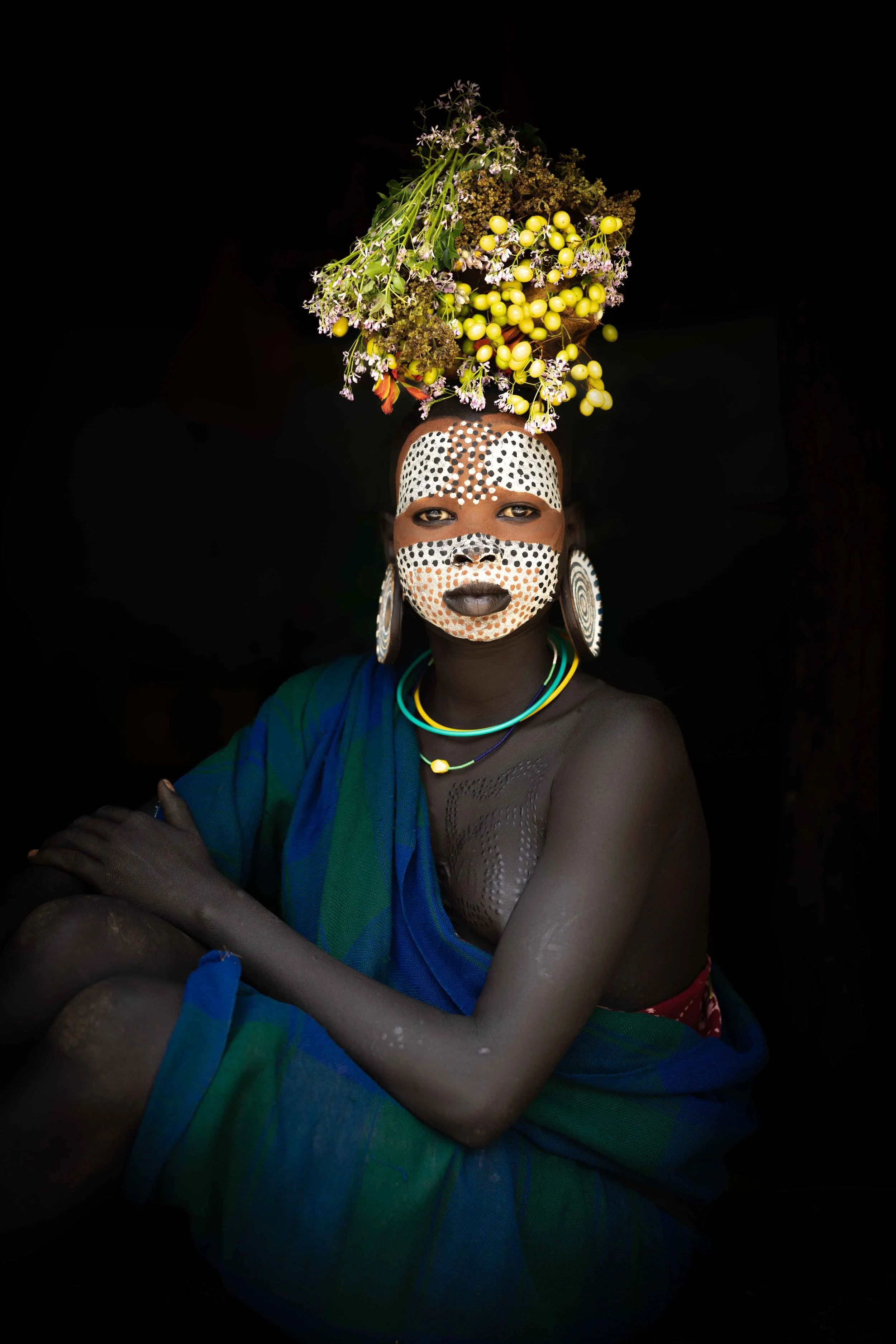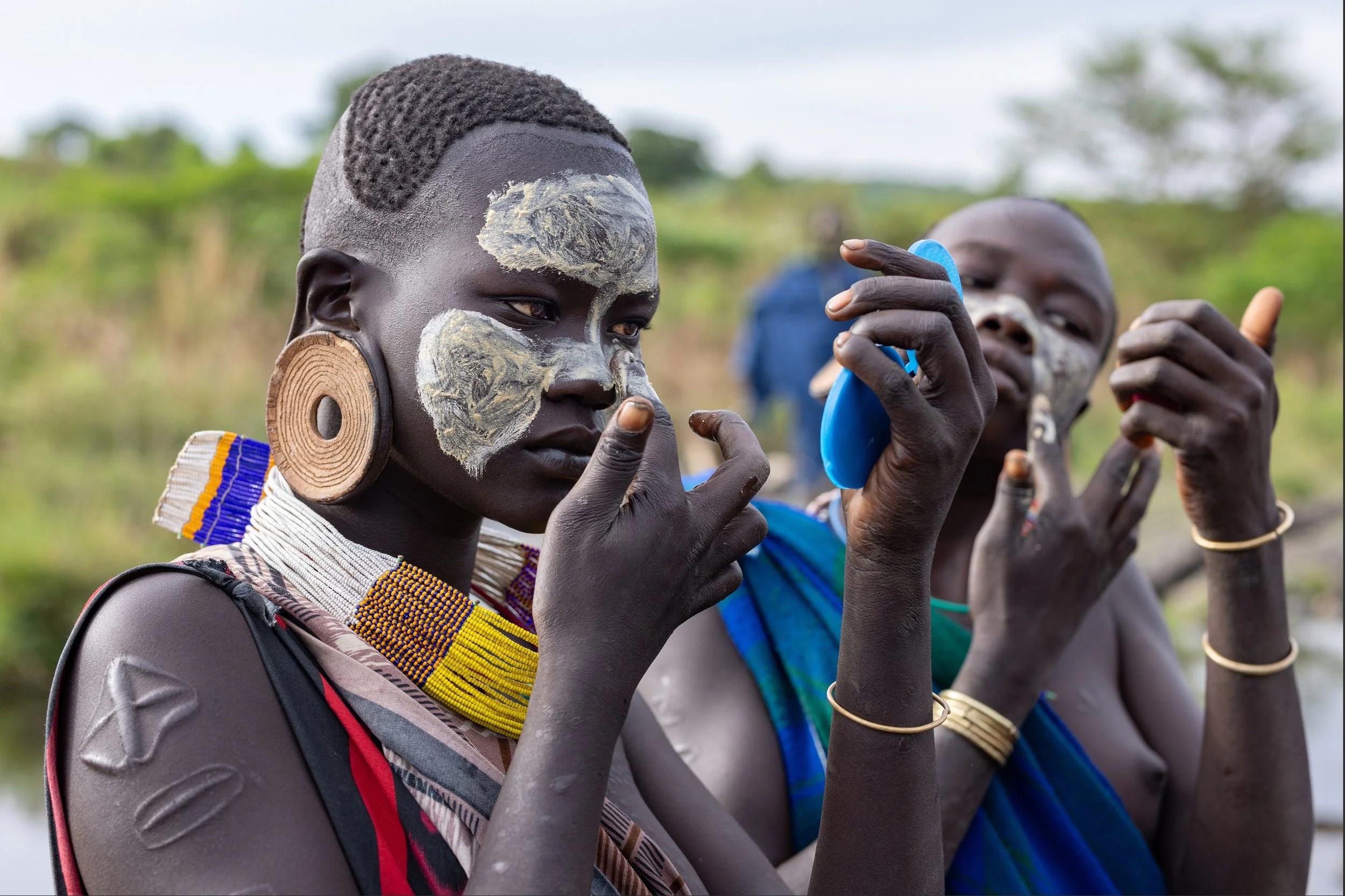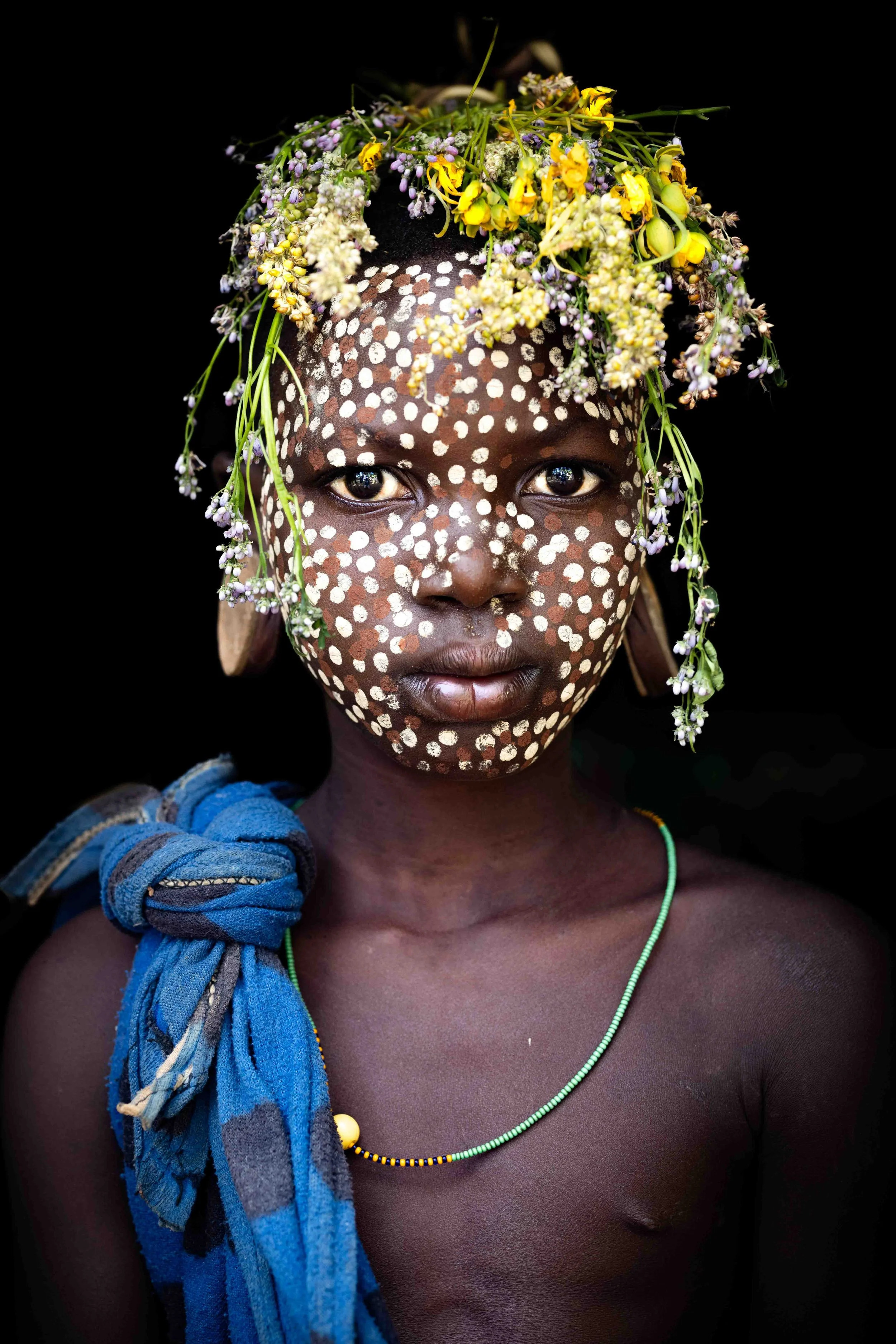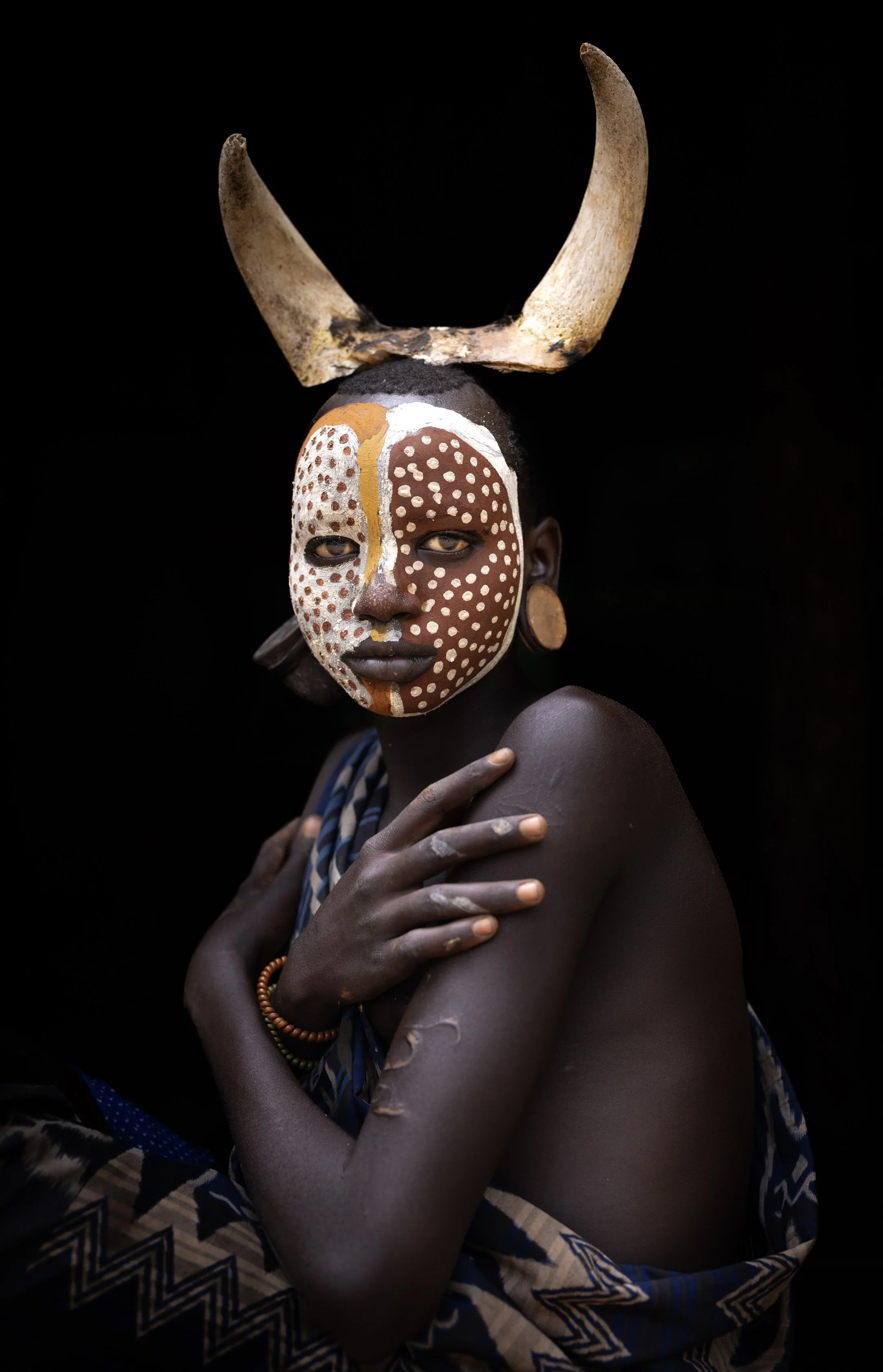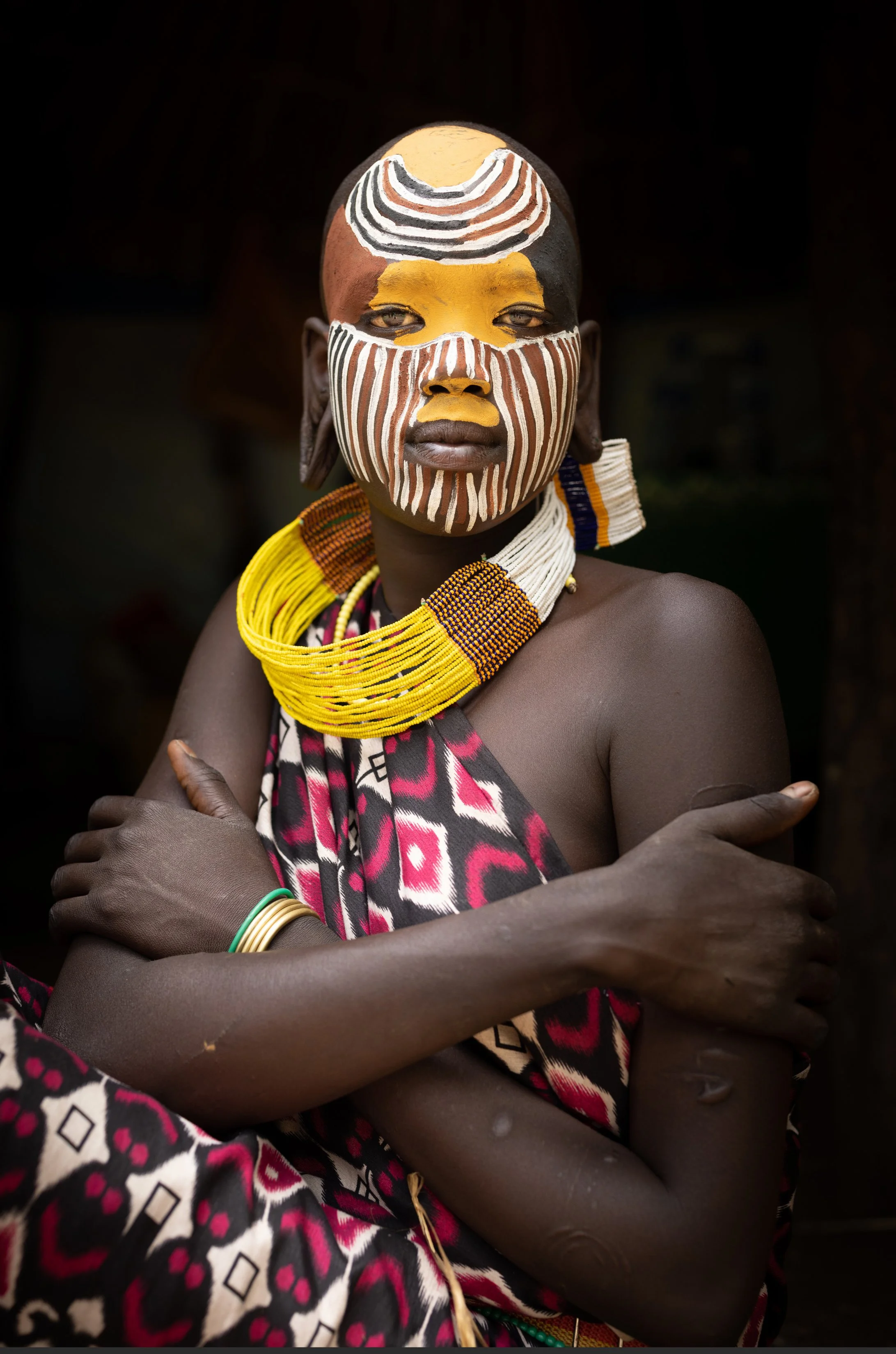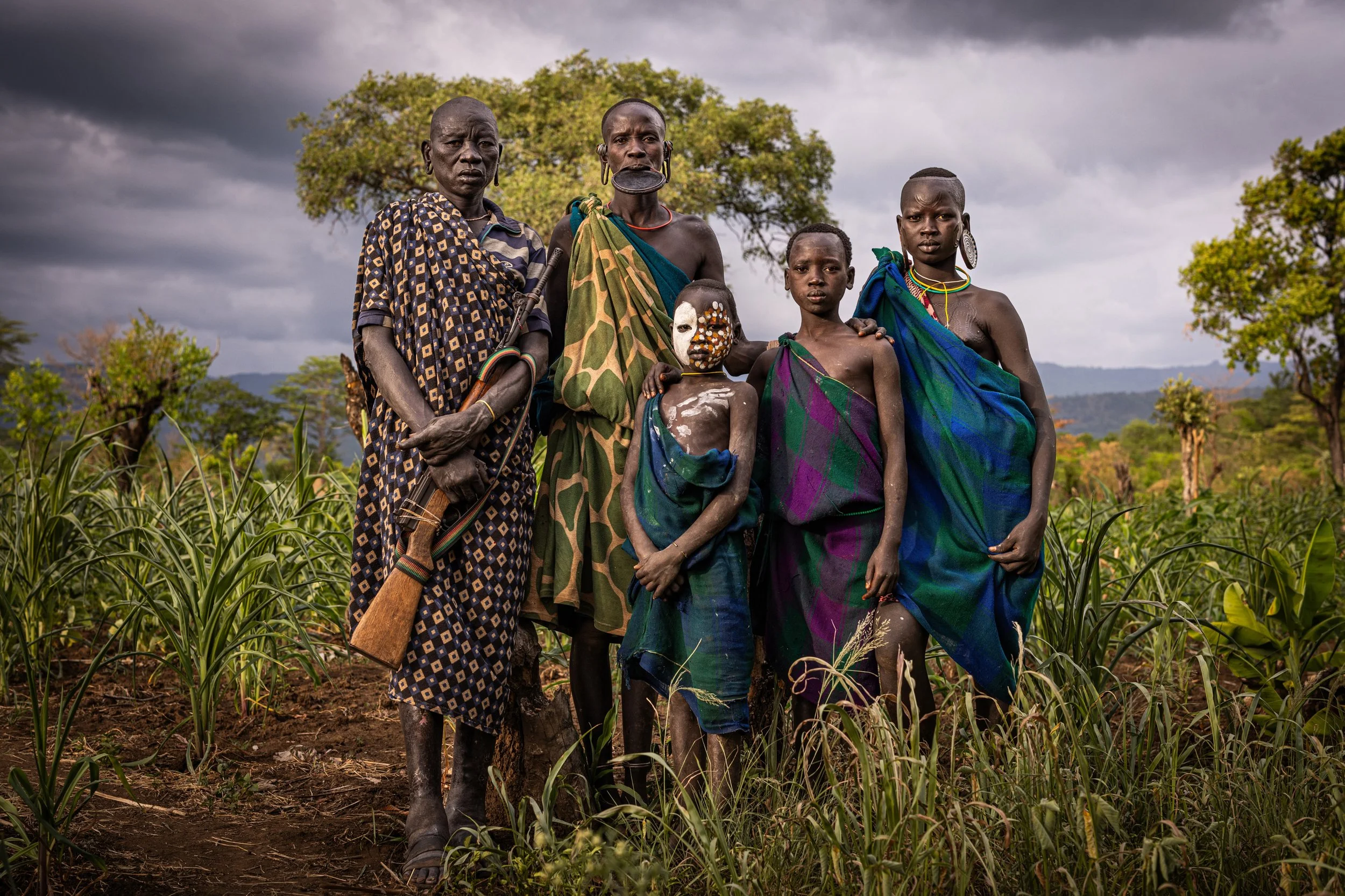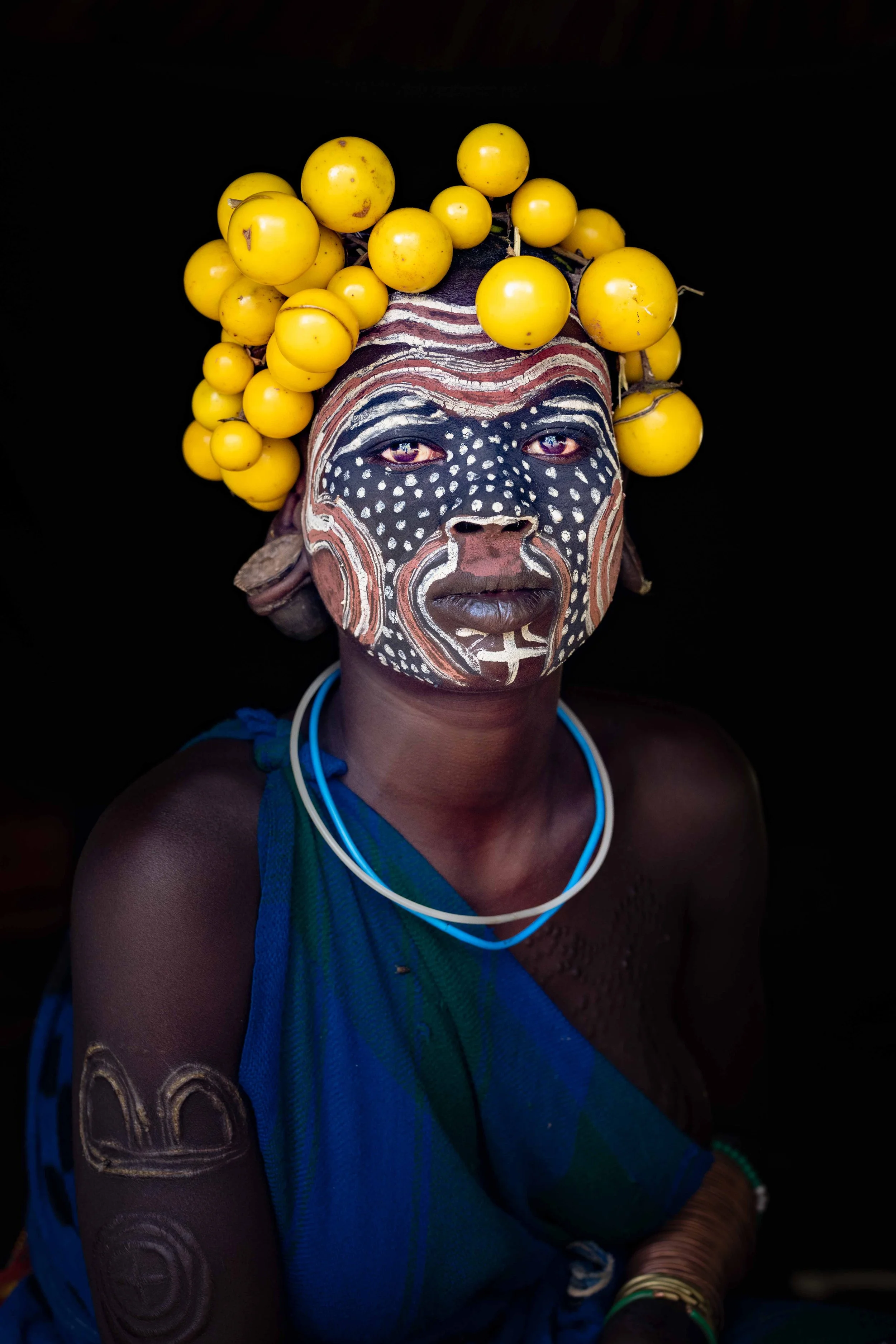Suri Guardians
The Intersection of
Photography and Art
Photography and story by Matilde Simas
SURI GUARDIANS | The Intersection of Photography and Art
Photography and story by Matilde Simas
Photography is storytelling through light, color, and composition. Like any art form, it communicates meaning—but what sets it apart is its immediacy. A photograph captures a fleeting moment, preserving its emotion and energy, and invites the viewer into another world.
At its most powerful, photography becomes more than a visual record—it becomes a reflection of life itself. An exemplary exploration of this idea is Suri Guardians: A Documentary Exploration of Tradition and Legacy. This project immerses us in the lives of the Suri people of Ethiopia’s Omo Valley, a region renowned for its rich cultural diversity. By blending documentary authenticity with artistic sensitivity, the work captures the strength, beauty, and enduring traditions of the Suri community—preserving a living culture through the lens.
The Omo Valley is a living museum—a place where ancient traditions have endured for centuries. In many ways, these communities remain insulated from the forces of colonization and globalization. Cultural practices are passed down through generations, deeply connecting the people to their land and ancestors. This makes the Omo Valley a place of profound significance for anthropologists, historians, and artists alike. Among the diverse tribes of the region, the Suri people stand out for their striking self-adornment practices. Elaborate face painting, intricate body decoration, and the use of natural elements such as flowers and leaves are central to their expression of identity. These creative acts are far more than aesthetic; they are a living archive of cultural heritage. Through photography, we not only showcase this artistry but help safeguard a vital part of humanity’s collective history.
Photography possesses a unique power to bridge cultural divides. It fosters empathy and appreciation for ways of life different from our own. Suri Guardians offers an intimate window into the heart of the Suri community, inviting viewers to witness their traditions, values, and resilience. By focusing on individuals within the tribe, the project highlights universal themes—identity, belonging, and the human connection to the natural world.
Marila, a Suri Water Guardian, embodies this connection. Her role, deeply spiritual and ecological, reflects the Suri people’s relationship with their land. “These patterns,” she said, gesturing to her face paint, “are like the river—always flowing, always connected.”
Another image that stayed with me was that of Nyala, a Land Guardian. I watched as she moved quietly through the tall grass, pausing beneath a weathered tree. “This land carries our stories,” she said. “The trees, the rivers, the stones—they remember our ancestors.”
Land Guardians like Nyala are not only stewards of nature—they are protectors of cultural memory. They preserve sacred sites, mediate access to resources, and sustain practices that bind the community to the land.
On a broader scale, this work contributes to the global conversation on cultural preservation. The Suri’s artistic practices are not merely decorative; they are a testament to human ingenuity, adaptability, and the profound relationship between people and their environment. Photography becomes a tool of preservation—a visual archive ensuring that these traditions are not lost to time.
Creating art that authentically represents another culture comes with profound responsibility. How does one celebrate a community’s traditions without romanticizing or objectifying them? In Suri Guardians, the goal was not only to document the Suri people’s artistry but to do so with integrity, respect, and collaboration. To honor their voices, I relied on natural light, minimal post-processing, and careful composition. The interplay of light and shadow brings out the textures of painted faces, the softness of floral adornments, and the vibrancy of the landscape. Every photograph was composed to draw attention to the deeper cultural significance of each detail, with lines and shapes guiding the eye gently toward the heart of the story.
Equally important was consent and collaboration. Every individual photographed participated willingly and shared insights into their traditions. This dialogue ensured that their stories were represented authentically, making them co-creators in the visual narrative.
In an era of rapid globalization and environmental transformation, photography plays a vital role in preserving Indigenous knowledge systems. Communities like those in the Omo Valley—whose traditions have endured for centuries—now face mounting threats from modernization, climate change, and land pressures. The urgency to document and share these practices has never been greater. Through Suri Guardians, I sought to create a visual archive that captures the artistry of the Suri people while raising awareness about the fragility of such cultural legacies. These images serve as more than aesthetic documentation—they are living records. They allow future generations to witness the beauty, strength, and creativity of a culture that exists in harmony with the earth.
Photographing Indigenous communities demands care, humility, and ethical commitment. It’s essential that such work is approached with transparency, collaboration, and a genuine desire to listen. With Suri Guardians, I made a conscious effort to involve the community throughout the process, ensuring they had agency in how they were represented. As part of this collaboration, a portion of the project’s proceeds was returned directly to the Suri people, funding community-led initiatives identified by them. This approach underscores that the project is not merely about the photographer’s vision—but a shared act of storytelling rooted in mutual respect.
This project was more than a professional pursuit; it was a deeply personal journey. My passion for documenting diverse cultures was born in college, where I formed lifelong friendships with East African classmates who introduced me to their languages, food, and history. Those early connections inspired my travels to Ethiopia and sparked a profound curiosity that continues to shape my work today. Visiting the Suri was transformative. The relationships I formed, the stories I heard, and the artistry I witnessed deepened my understanding of the beauty and complexity of cultural identity. Through photography, I’ve shared that journey—not only in images, but through a message of connection and care.
Through Suri Guardians, I sought to capture the beauty and resilience of the Suri people while amplifying the importance of preserving their heritage. Each image stands as a celebration of their creativity, a record of their traditions, and a reflection of the power of culture to transcend time.
As photographers and artists, we hold both a privilege and a responsibility—to tell stories that matter, to listen more than we speak, and to create work that honors people with truth and dignity. Suri Guardians is a testament to that belief: that photography, at its best, is a transformative force—a bridge between worlds and a mirror to our shared humanity.





